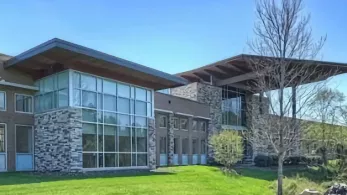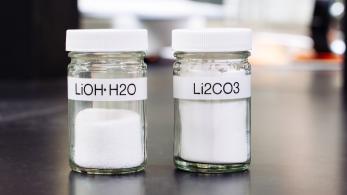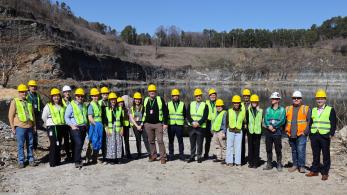Lithium mining began at Kings Mountain during World War II. The military used the element to help create the hydrogen gas needed for observation balloons, to lubricate airplane engines so they could withstand extreme temperatures and to strengthen the structure of aluminum and steel. The site’s lithium again played a role in national defense efforts during the Cold War.
The mine closed in the early 90s, but Albemarle is working to re-open the site. It’s happening amid bipartisan momentum to bolster the domestic supply chain of lithium.
To perform geologic work at the site, Frempong’s team collects, analyzes and interprets a wide range of data. That includes drilling exploratory holes that are approximately 200 feet apart and have an average depth of 1,500 feet beneath the surface. Since 2017, more than 400 of these exploratory holes have been drilled across the 1,200-acre site.
The work has produced more than 350,000 feet of core samples of the site’s geology.
The team uses this data to develop 3D geologic models to determine the mineral makeup and mineral resource estimates. Those are digital representations of subsurface geologic conditions, the lithium concentration and the orebody geometry, which is the shape of the spodumene-pegmatite.
“We need to determine the spatial location, size and quality of the lithium deposit,” Frempong says. “This is what helps us plan for the life of the mine.”
But finding the spodumene-bearing pegmatites is only part of the challenge. Extracting it sustainably is just as important.
Frempong’s work in advance of potentially re-opening the mine helps Albemarle responsibly manage the site’s natural resources. He’s careful not to move any more material or disturb land more than necessary. And he helps create a circular economy that reduces waste by keeping materials in use for as long as possible.
Consider the way the team plans to reuse most of the non-lithium bearing rock that will be extracted during mining. Albemarle plans to transfer it to a construction aggregate for use in infrastructure and construction projects.
For Frempong, sustainability isn’t just a goal. It’s part of his job.
“You only get to extract the spodumene-bearing pegmatites once,” he says, “so you need to do it efficiently and responsibly.”



